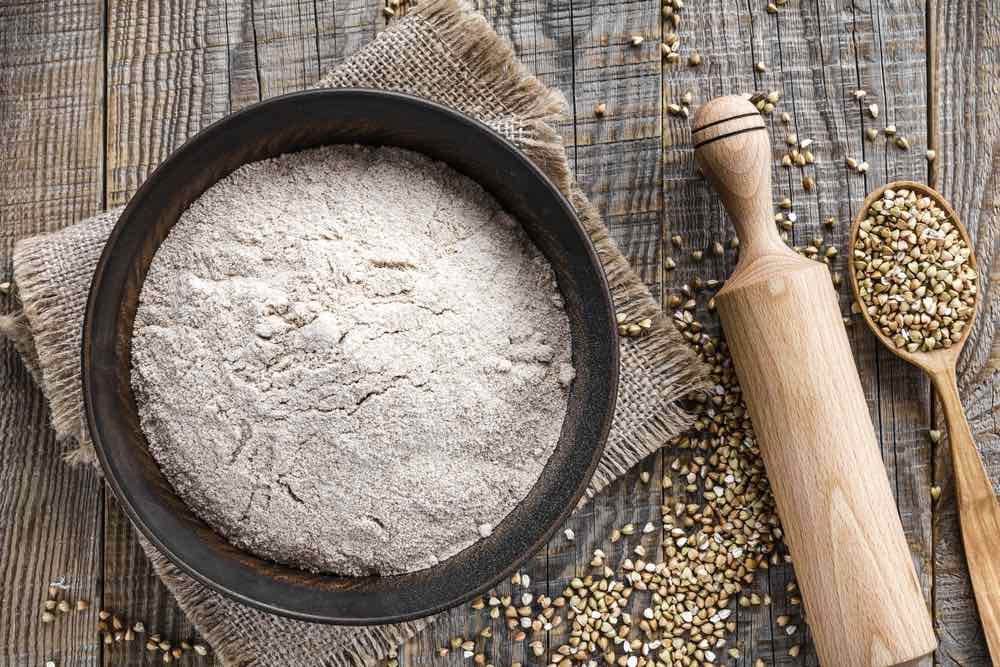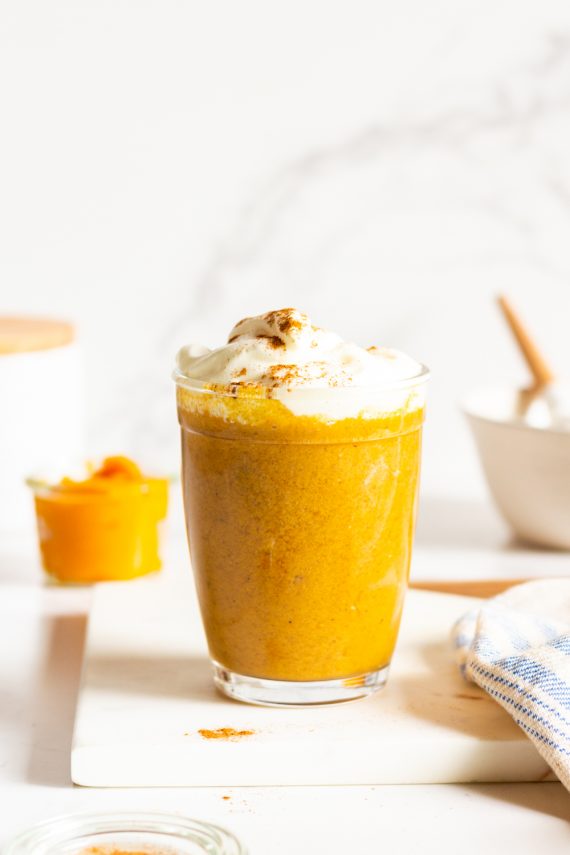What Flours & Starches are Low FODMAP?
Understanding what flours are low FODMAP is important when creating delicious low FODMAP baking, or selecting safe gluten free bread. The purpose of this article is to explore which flours and starches are safe for us to use during the elimination phase of the diet. Just remember that for your final end product to be low FODMAP, all ingredients must be low FODMAP. This is especially important because food processing can change FODMAP levels. As a general rule, gluten free flours tend to contain lower FODMAP levels, however, there are a couple of exceptions you need to know about.
For more helpful articles and low FODMAP tips please follow me on Facebook or sign up to my weekly newsletter.
Quick Reference Table: Flours & Starches
| Low FODMAP Flours & Starches | High FODMAP Flours & Starches | Untested Flours |
|---|---|---|
| Almond Meal (less than ¼ cup per serve) | Almond Meal (at 1/2 cup serves) | Soy Flour (Suspected High FODMAP) |
| Arrowroot Flour (safe serve 2/3 cup) | Amaranth Flour | |
| Buckwheat Flour (safe serve 2/3 cup) |
Barley Flour | Chickpea/Besan Flour (Suspected High FODMAP) |
| Corn Flour (safe serve 2/3 cup) |
Chestnut Flour | Lentil/Gram Flour (Suspected High FODMAP) |
| Gluten Free Plain Flour made from rice, potato & tapioca (safe 2/3 cup) |
Coconut Flour | |
| Green Banana Flour (safe 2/3 cup) | Einkorn Flour | |
| Maize Flour (safe serve 2/3 cup) |
Emmer Flour | |
| Millet Flour (safe serve 2/3 cup) | Kamut (Khorasan) Flour | |
| Organic Sieved Spelt Flour (safe serve 2/3 cup) | Organic Spelt, White Spelt, Wholemeal Spelt | |
| Quinoa Flour (safe serve 2/3 cup) |
Lupin Flour | |
| Rice Flour (safe serve 2/3 cup) |
Rye Flour | |
| Sorghum Flour (safe serve 2/3 cup) |
Wheat Flour | |
| Teff Flour (safe serve 2/3 cup) |
||
| Yam Flour (safe serve 2/3 cup) |
||
| Maize Starch (safe serve 2/3 cup) | ||
| Potato Starch (safe serve 2/3 cup) | ||
| Tapioca Starch (safe serve 2/3 cup) |
(Table compiled from Monash University App, 2015)
Low FODMAP Flours & Starches
Almond Meal (FODMAP Content Varies)
Almond meal is made from either whole or blanched ground almonds (1). The FODMAP content of almond meal varies depending on the serving size. Almond meal is low FODMAP at a ¼ cup serve (24g or 0.85oz) (2). It becomes high FODMAP at larger ½ cup serves (48g or 1.7oz) (2). This means if you use 1 cup of almond meal in a recipe, you will need to divide the baking into at least four serves for it to be low FODMAP.
Buckwheat Flour (Low FODMAP)
Buckwheat flour is made from the ground seeds of the buckwheat plant (3). It is naturally gluten free and is closely related to rhubarb (3). According to Monash University buckwheat flour (both standard & wholemeal) is low FODMAP at 2/3 cup (100g or 3.53oz) serves (2).
Corn Flour (Low FODMAP)
Corn flour or corn meal (also known as maize flour), is the whole corn kernel milled into flour. When corn flour is very coarse it is called polenta. In New Zealand, Australia, and UK the corn flour is actually corn starch and this is a different product (see maize starch). Corn flour is low FODMAP and safe in 2/3 cup (100g or 3.53oz) serves (2).
Maize Flour (Low FODMAP)
Maize flour is the entire corn kernel milled into flour. Maize flour when very coarse is called polenta, and when it is finely ground it is called flour. Maize flour is low FODMAP and safe in 2/3 cup (100g or 3.53oz) serves (2).
Maize Starch (Low FODMAP)
Maize starch is sometimes called corn starch, or corn flour depending on the country. It is low FODMAP and safe in 2/3 cup (100g or 3.53oz) serves (2). Corn flour in the UK, Australia and New Zealand is the same as corn starch in the USA (4). In some countries corn flour, can contain wheat, so when choosing a corn flour make sure it is made from maize and not wheat (4).
Millet Flour (Low FODMAP)
Millet flour is made by grinding the small seeded grains that come from several different genera of the grass family Poacea (5). Millet is naturally gluten free. According to Monash University millet flour is low FODMAP at 2/3 cup (100g or 3.53oz) serves (2).
Organic Sieved Spelt Flour (Low FODMAP)
According to the latest Monash app update, organic sieved spelt flour is low FODMAP (2). This spelt flour is different to white spelt flour (this is sieved during the manufacturing process but is still high FODMAP). Unfortunately, I have not been able to find more information on organic sieved spelt flour, but I will let you know if and when I do. Alternatively if you have any information please contact me at [email protected]. Organic sieved spelt flour is low FODMAP at 2/3 cup (100g or 3.53oz) serves (2). Also remember that 2 slices of spelt sourdough bread, or ½ a cup of cooked spelt pasta, is low FODMAP (2). This means small amounts of spelt flour may be well tolerated.
Quinoa Flour (Low FODMAP)
Quinoa flour is low FODMAP and is made from ground quinoa seeds (6). It is low FODMAP at 2/3 cup (100g or 3.53oz) serves (2).
Rice Flour (Low FODMAP)
Rice flour is made from finely ground raw rice (7). According to Monash University both normal rice flour and roasted rice flour are low FODMAP at 2/3 cup (100g or 3.53oz) serves (2).
Sorghum Flour (Low FODMAP)
Sorghum is an ancient cereal grain that originates from Africa and it is commonly used in gluten free flour mixtures (5). Sorghum is low FODMAP at 2/3 cup (100g or 3.53oz) serves (2).
Teff Flour (Low FODMAP)
Teff is a fine grain about the size of a poppy seed that is ground to make teff flour (9). It is naturally gluten free. According to Monash University teff flour is low FODMAP at 2/3 cup (100g or 3.53oz) serves (2).
Yam Flour (Low FODMAP)
Yam flour is made from yams that have been peeled, sliced, cleaned, dried and then ground into a flour (10). It is low FODMAP at 2/3 cup (100g or 3.53oz) (2). This flour is also gluten free (2).
Potato Starch (Low FODMAP)
Potato starch is a very fine white powder, which is made from the dried starch component of peeled potatoes. Potato starch is low FODMAP and safe in 2/3 cup (100g or 3.53oz) serves (2).
Tapioca Starch (Low FODMAP)
Tapioca starch is also known as tapioca flour, and it is made from the cassava plant (Bob’s Red Mill, 2015). According to Monash University, tapioca starch is low FODMAP at 2/3 cup (100g or 3.53oz) serves (2).
High FODMAP Flours
Amaranth Flour (High FODMAP)
Even though amaranth flour is gluten free, it is still high FODMAP (2). Amaranth flour is produced by finely grinding the seeds of the amaranth plant (13).
Barley Flour (High FODMAP)
Barley flour is produced by finely milling pearl barley or barley that has had its outer husks removed (14). Barley flour does contain gluten and according to Monash University it is high FODMAP (2).
Einkorn Flour (High FODMAP)
Einkorn is one of the oldest varieties of wheat that dates back thousands of years (15). It was one of the first cereal grains to be cultivated. Einkorn flour is high FODMAP and contains gluten (2).
Emmer Flour (High FODMAP)
Emmer is a type of wheat and also goes by the name of farro or hulled wheat. Emmer flour is high FODMAP (2).
Kamut (Khorasan) Flour (High FODMAP)
Kamut is a trademark name for an ancient variety of wheat called Khorasan (16). Khorsan flour or kamut flour are high FODMAP (2).
Lupin Flour (High FODMAP)
Although lupin flour is gluten free, it is high FODMAP. Lupin flour comes from the seeds of the common lupin garden plant, and it is related to the legume family (peanuts, lentils, beans, peas). Lupin flour is high FODMAP and needs to be avoided (2).
Rye Flour (High FODMAP)
Rye is a cereal grain like wheat and it does contain gluten (17). Rye flour is high FODMAP (2).
Organic, White & Wholemeal Spelt Flour (High FODMAP)
Organic spelt flour, white spelt flour, and wholemeal spelt flour are all high FODMAP flours (2). Remember that 2 slices of spelt sourdough bread is low FODMAP and ½ a cup of cooked spelt pasta is low FODMAP (2). This means that even though spelt is high FODMAP, small amounts of spelt may be well tolerated.
Wheat flour (High FODMAP)
Wheat flour is the most commonly used flour and it does contain gluten. According to Monash University, wheat flour is high FODMAP at a serving size of 2/3 of a cup (100g or 3.53oz) (2). According to Monash University small amounts of wheat like that found in 2 biscuits, or ½ a cup of pretzels is low FODMAP (2). This means you may be able to tolerate small amounts of wheat during the elimination phase.
Coconut Flour (High FODMAP)
Coconut flour is a by-product of coconut milk production (18).
Coconut flour has been tested by both Monash University and FODMAP Friendly and it is high FODMAP. The FODMAP Friendly app shows that coconut flour is high FODMAP for sorbitol at a 3 tablespoon serve (20). In large serves coconut flour contains high levels of GOS, fructan and excess fructose content as well as sorbitol.
Are you ready to take control of your gut symptoms?
No thanks, my gut is perfect.
Article continues below
Another potential issue with coconut flour is its fibre content. While fibre isn’t an issue on the low FODMAP diet, some types of fibre can aggravate IBS symptoms (read more here). According to research, coconut flour contains 60.9% total dietary fiber, 56.8% insoluble and 3.8% soluble. As I discussed in my article on low FODMAP fibre sources, insoluble fibre helps keep us regular. However, research also indicates that some IBS patients do not tolerate high levels of insoluble fibre (like bran), and that increasing the insoluble fibre in their diets could worsen IBS symptoms (21 22 23). This means that for some people with IBS coconut flour may not be a suitable option.
Flours with Unknown FODMAP Content
Soy Flour (Untested but Suspected High FODMAP)
Soy flour is made by roasting soy beans and then grinding them into flour (24). Soy beans are high FODMAP, and soy bean fibre contains the oligosaccharides that trigger our IBS symptoms (25). This means soy flour is likely to be high FODMAP, although it has not officially been tested by Monash University. This means you should avoid soy flour during the elimination phase.
Final Thoughts
There are a number of safe low FODMAP flours to choose from when making homemade baking. I enjoy using a commercial gluten free flour blend that contains several low FODMAP flours. Just remember when experimenting in the kitchen, that all your ingredients should be low FODMAP. This is to make sure your end product is low FODMAP. Once you finish the elimination phase, you might discover that you can add some high FODMAP flours back into your diet. For more helpful articles and low FODMAP information, please sign up to my newsletter or follow me on Facebook. Happy baking everyone.
Image credit: Sea Wave/Shutterstock.com











I see that Tapioca flour is low FODMAP. I’m wondering about Cassava flour. Is it also low FODMAP or does the fact it’s made from the whole root change its rating?
Hi Melanie,
That is a great question. Right now cassava flour hasn’t been tested for FODMAPs. We know that cassava root does contain some GOS at a 100g serve and it’s possible the GOS might become more concentrated when the root is made into flour. The best way to figure out if you can eat it would be to try a small amount when your symptoms are settled and to monitor your reaction.
Hello, I recently started trying the low FODMAP elminitation stage and have found your blog one of the most useful resources available online – thanks so much. I was wondering about combining any of these low FODMAP flours together, for when you need more than a 2/3 cup serving. For example, 2/3 cup teff flour with a little tapioca flour and a little millet or almond flour to make it up to one cup. I’m unsure if this is ok because if they contain the same kind of FODMAP, would it not be the same as having a larger portion of just one of the flours? Or perhaps you are aware of some combinations that would be ok.
Thanks!
Hi Alastair,
The teff flour, millet flour, and tapioca flours don’t contain warning notes in the Monash app so they are fine to combine. With the almond flour just make sure you remain within the low FODMAP serving size per serve for that flour when mixing it into your flour mix. I hope that helps!
Is yellow lentil flour pasta low fodmap????
Hi Mary Lou,
Yellow lentil flour pasta is currently untested. We know lentils do contain some FODMAPs so it’s hard to tell where this pasta would fall on the high to low FODMAP scale. If you are currently in the first phase of the low FODMAP diet then we would recommend avoiding it for now. Then test your tolerance to the pasta in the reintroduction/challenge phase.
I assume it hasn’t been tested, but any thoughts on whether cricket flour would be low FODMAP or not?
Hi Rob,
You are right that cricket flour is untested. We do know it is high in protein which is good as FODMAPs are carbohydrates but we still won’t know what the FODMAP levels are until it’s tested. If your symptoms are settled you could test your tolerance to 1 tbsp and then increase your serve from there. I hope that helps!
I’m someone who’s extremely sensitive to FODMAPS, (and thank G-d) I’ve come to realize this was the root of all my bloating, gas, gut issues, etc…at any rate, I’ve been reading how many folks tolerate SPELT flour so I’ve given it a go! It’s excellent and cause 0 (zero) issues!. I have tuna or egg salad on Spelt toasted bread; it’s great! I think the list should be revised to include Spelt in the LOW FODMAP category.
Hi Michael,
Thanks for commenting. The above list is based on laboratory data about the FODMAP content of flours. According to research from Monash Unversity some spelt flours do contain FODMAPs which is why spelt flour appears in the high FODMAP list.
However, the manufacturing process of 100% spelt bread or traditional spelt sourdough bread can reduce the FODMAP content and make the bread a low FODMAP option. This is possibly why you are able to tolerate spelt bread without experience symptoms.
There is some more information in here: https://alittlebityummy.com/what-sourdough-bread-is-low-fodmap/
Do you know if pea starch is high FODMAP? It is now in Udi’s gluten free soft white bread & I noticed that if I have more than one slice, I do not feel well.
Hi Judi,
Pea starch is currently untested which means we don’t know the FODMAP content of this ingredient yet. If it is far enough down the ingredient list, the amount per serve of bread should be small and might fall within low FODMAP limits. However, we won’t know this until the bread is tested. If you think the bread is making you feel unwell, then we would suggest swapping to a different brand of bread. You can always retest your tolerance to Udi’s bread at the end of the re-challenge period.
First of all thanks for this great website. Do you know if Doves Farm Self Raising Gluten Free flour is low FODMAP? All the flours listed in the ingredients are, it is the raising agents and xanthan gum I am wondering about. Thanks.
Hi Nichola,
Thanks for commenting! Xanthan gum and raising agents are all considered low FODMAP ingredients. This means we believe Doves Farm Self Raising Gluten Free Flour is a low FODMAP option. You also might find this label reading guide useful when trying to figure out if ingredients are high FODMAP or low FODMAP: https://alittlebityummy.com/low-fodmap-guide-to-reading-labels/
Hi, do you think amaranth flour in small amounts would be okay? I have some Old El Paso Gluten Free tortillas and these are the ingredients in it. Tapioca Starch (53%), Water, White Corn Masa Flour (8%), Stabilisers (Glycerol, Xanthan Gum), Quinoa Flour (4%), Amaranth Flour, Emulsifier (Mono- and Diglycerides of Fatty Acids), Salt
Also what about gluten free things that contain small amounts of gram/chickpea flour? Should those be safe, if it’s not the main ingredient?
Hi Jennifer,
Thanks for commenting. If the amaranth flour is listed at the end of the ingredient list then we think the product would be worth trying. Chances are it will be well tolerated. We also know lots of people who use those tortilla wraps successfully.
thanks for your reply 🙂 Also what about gluten free things that contain small amounts of gram/chickpea flour? Should those be safe, if it’s not the main ingredient?
Hi Jennifer,
The verdict is still out on chickpea/gram flour and in general, it is currently considered a high FODMAP ingredient. That means if it isn’t the main ingredient in a product then we recommend you test your tolerance level to a small serving size. We hope that helps.
Curious if this “Panda Puffs” peanut butter gluten free cereal is low-fodmap. Here are the ingredients:
INGREDIENTS:
Whole grain corn meal*, corn meal*, cane sugar*, peanut butter*, soy oil*, sea salt, tocopherols (vitamin E). *Organic. Contains peanuts and soy. Produced in a facility that uses tree nuts.
Hi Nikos,
Thanks for commenting. Okay so we can’t see any obvious high FODMAP ingredients in there. However, sometimes manufacturing processes can increase the FODMAP levels of cereal based products. What we recommend is that you test your personal FODMAP tolerance to the product – start with 1/4 cup serving size and work your way up from there. Here’s a guide that will help: https://alittlebityummy.com/can-i-eat-this-testing-your-fodmap-tolerance-to-untested-foods/
Hi there,
I am really confused as to why gluten free pasta is considered to be high in 1.5 cup amounts. If the gf pasta is made from low fodmap flours? Eg rice/corn/maize flour. Also may I point out that the monash university app only displays a green serve of 1 cup, yet when you read the description it says high in 1.5 cup serves. There is no actual red indicator on this food, so i think a lot of people would be confused. I know i don’t always click on every food i eat to check the indicator if its displayed as green. Its only by looking at recipes for lowfodmap gf df pastas that i have found this information. Being gluten free and dairy/lactose free plus a fodmap diet is hard enough as it is. Its also really sad that some amazing gluten free recipes i can no longer use or have to modify and play with flours and measurements, as well as other ingredients.
Hi Emma,
Thanks for commenting. It’s good to remember that manufacturing processes can also affect FODMAP levels and this is most likely why gluten free pasta made from low FODMAP flours becomes high FODMAP in large serves. We know that Monash University is continuously updating their app and you can give feedback with what you are struggling with directly to them. Also remember that the amount listed in the app for pasta is the cooked amount. This means if a recipe makes four serving sizes you can use 4 cups of cooked pasta which is a lot of pasta for a recipe. If you need help adapting recipes, then let us know.
Great info. Thanks.
Hi Verlyn,
You are very welcome. We are glad you found the article useful.
I love your website! I will frequently go on it to get inspiration. Im not a heavy duty baker and as I am looking at all of these flour serving portions im a bit confused as most recipes often call for a cup of flour but in the acceptable amount of low fodmap flour we are 3/4 of a cup… so I’m curious how that all works. Maybe you have a section with yummy recipes that have the serving ratios all laid out for us!
Hi Alexandra,
Thanks for commenting! So when thinking about flour in baking you want to remember that it gets divided into the number of serves the slice/cake/cookies/muffins make. This means it would be very rare for you to have a 3/4 cup serve of flour in a piece of baking. That means normally we recommend that you find a good gluten free all purpose flour and just use that for your baking. That way you don’t need to worry about ratios. Does that help?
Thanks for the information. Are the sizes for cooked portion or dry uncooked flour?
Hi Patrick,
That’s a great question. With flour the portion size will be the dry uncooked amount (e.g. the weight amount when you scoop the flour out of it’s packet). We hope that helps!
Yes, that helps. Thank you Alana.